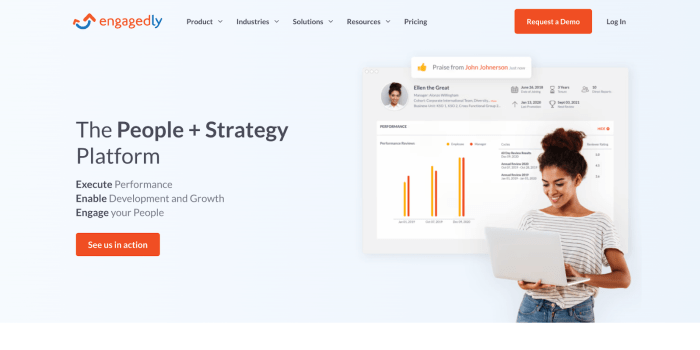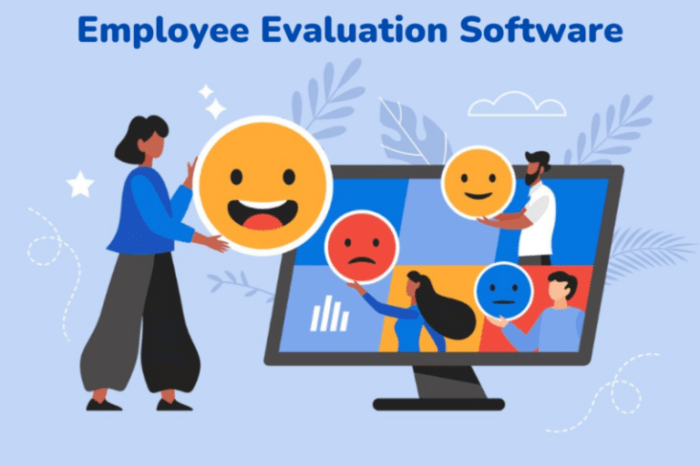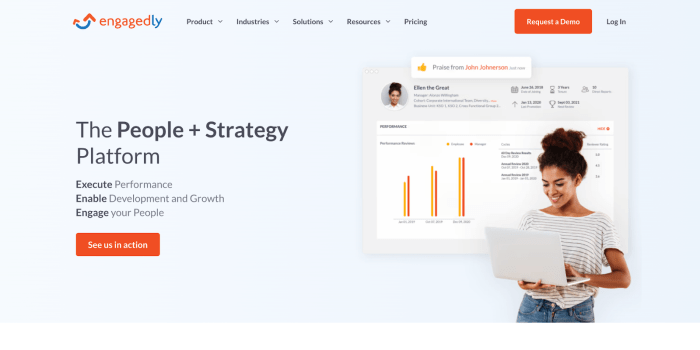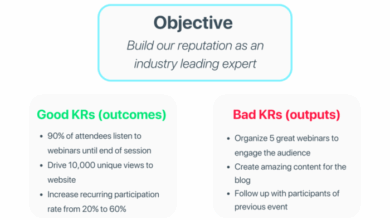
Best employee evaluation software is crucial for modern organizations. It streamlines the process, fostering a more transparent and efficient approach to performance management. This guide explores the evolution of employee evaluations, key features, benefits, and the considerations for choosing the right software for your needs. We’ll delve into everything from performance management to 360-degree feedback, helping you navigate the landscape of employee evaluation tools.
From identifying essential features to understanding implementation strategies, this comprehensive guide covers the entire employee evaluation software lifecycle. We’ll explore the importance of accurate data analysis, integration with HR systems, and the role of employee feedback in shaping the future of employee evaluation. Learn how to choose the right software, implement it effectively, and leverage it to boost employee performance and engagement.
Introduction to Employee Evaluation Software
Employee evaluation software is a crucial tool for modern organizations aiming to optimize employee performance and drive business success. It streamlines the process of assessing employee contributions, providing constructive feedback, and facilitating performance improvement plans. Beyond basic ratings, sophisticated systems now incorporate various methods, fostering a more comprehensive understanding of individual and team performance.The evolution of employee evaluation practices reflects a shift from traditional, often subjective methods to more data-driven and holistic approaches.
Early systems primarily focused on annual reviews and simple rating scales. Current trends emphasize continuous feedback, 360-degree evaluations, and the use of data analytics to identify performance patterns and areas for development. This evolution is crucial because it allows organizations to adapt to the dynamic nature of the modern workplace and foster a culture of continuous improvement.
Core Functionalities of Employee Evaluation Software
Employee evaluation software encompasses a wide range of functionalities designed to support the entire employee performance cycle. These systems often include features for setting performance goals, tracking progress, delivering feedback, conducting performance reviews, and generating performance reports. Moreover, they facilitate the creation and management of performance improvement plans, allowing for ongoing support and development.
Evolution of Employee Evaluation Practices
The evolution of employee evaluation practices has been driven by a growing need for more objective and data-driven assessments. Early methods often relied on subjective judgments and infrequent reviews, leading to inconsistencies and potential biases. Modern approaches, in contrast, utilize continuous feedback mechanisms, incorporating 360-degree feedback from multiple sources, and leveraging data analytics to provide more nuanced insights into employee performance.
This shift toward a more dynamic and holistic approach has significantly improved the effectiveness of performance management.
Importance of Effective Employee Evaluation Systems
Effective employee evaluation systems are paramount for organizational success. They provide a structured framework for recognizing and rewarding high-performing employees, while also identifying areas where improvement is needed. Furthermore, they create a transparent and fair process for performance management, contributing to a positive work environment and reduced employee turnover. This is especially important in today’s competitive job market, where organizations need to attract and retain top talent.
A well-structured system encourages employee engagement and fosters a culture of continuous learning and development.
Comparison of Different Employee Evaluation Software Types
Different types of employee evaluation software cater to varying organizational needs and preferences. This table Artikels some key distinctions between common types.
| Software Type | Core Functionalities | Typical Users | Strengths | Weaknesses |
|---|---|---|---|---|
| Performance Management Software | Goal setting, progress tracking, feedback mechanisms, review scheduling | HR departments, managers, employees | Streamlines the entire performance cycle, promotes accountability | Can be rigid and may not always adapt to specific roles |
| 360-Degree Feedback Software | Gathering feedback from multiple sources (supervisors, peers, subordinates, self-assessment) | Employees, managers, HR | Provides a holistic view of performance, reduces bias | Can be time-consuming to implement and requires careful design |
| Employee Recognition Software | Rewarding employees for achievements and contributions, celebrating milestones | HR, managers, employees | Encourages positive behavior, boosts morale | Requires a well-defined recognition program and criteria |
Key Features of Effective Software: Best Employee Evaluation Software

Choosing the right employee evaluation software is crucial for a streamlined and effective performance management process. A robust system should not only capture feedback but also facilitate analysis, reporting, and ultimately, performance improvement. The best software goes beyond basic forms; it’s a dynamic tool that empowers managers and employees alike.Effective employee evaluation software needs a comprehensive set of features to truly enhance the performance management process.
These features should enable organizations to track employee progress, identify areas for improvement, and provide actionable insights. A well-designed system should be user-friendly, intuitive, and seamlessly integrated with existing HR tools.
Finding the best employee evaluation software can be a real challenge, but it’s crucial for effective performance management. While evaluating employee performance, it’s worth considering how Samsung is innovating in the tech world, particularly with their recent advancements in mobile technology, like the Winpho 8 ativ s. Samsung takes the high road with winpho 8 ativ s Ultimately, a robust evaluation system, combined with forward-thinking tech, helps businesses stay competitive and build strong teams.
Great software can be a game-changer.
Data Analysis and Reporting Capabilities
Comprehensive data analysis and reporting are essential for extracting meaningful insights from employee evaluations. Powerful reporting features allow organizations to track key performance indicators (KPIs) across departments, teams, or individual employees. This data-driven approach enables informed decision-making regarding compensation, promotions, and training initiatives. For example, identifying trends in performance ratings across teams can highlight areas where specific training might be beneficial.
Detailed reports on individual performance can support targeted coaching and development plans.
Integration with Other HR Systems
Seamless integration with other HR systems, such as payroll, benefits administration, and talent management platforms, is critical for efficiency. This integration streamlines data flow and reduces the need for manual data entry. For example, an integrated system can automatically populate employee information into evaluation forms, minimizing errors and saving time. This integrated approach ensures data consistency and accuracy across different HR processes.
User-Friendly Interfaces
A user-friendly interface is paramount for both managers and employees to easily navigate the software. Intuitive design, clear instructions, and well-organized dashboards are key components. This user-centric approach promotes active participation and engagement in the evaluation process. A visually appealing and easy-to-understand interface can significantly improve the overall user experience and increase adoption rates.
Managing Performance Goals and Objectives
Effective software should facilitate the setting and tracking of performance goals and objectives. This feature allows for the establishment of clear expectations and ensures accountability for both managers and employees. A well-structured system should allow for periodic reviews and adjustments to goals based on progress and evolving business needs. This helps in aligning individual performance with organizational strategies.
Facilitating Performance Improvement Plans
The software should enable the creation and management of performance improvement plans (PIPs). A robust system will streamline the process of documenting performance issues, setting goals, and tracking progress towards improvement. This systematic approach ensures that employees receive clear direction and support in addressing areas needing attention. Clear communication and timely feedback are vital components of a successful PIP.
Reporting Options
Reporting features in employee evaluation software are critical for drawing meaningful conclusions and making informed decisions. The following table showcases a variety of reporting options that are often available in such software:
| Report Type | Description |
|---|---|
| Individual Performance Reports | Detailed summaries of an employee’s performance, including ratings, feedback, and goal progress. |
| Team Performance Reports | Aggregate performance data for a specific team, providing insights into overall team strengths and weaknesses. |
| Departmental Performance Reports | Performance data across an entire department, enabling a broader view of performance trends. |
| Performance Trend Analysis | Visualizations and reports tracking individual or group performance over time. |
| Goal Achievement Reports | Data on the completion of individual and team goals. |
Benefits and Advantages
Employee evaluation software isn’t just a tool; it’s a catalyst for positive change within an organization. By streamlining the evaluation process, this software unlocks a wealth of benefits, fostering a more efficient, fair, and engaging work environment. It provides a structured framework for performance feedback, enabling employees to understand expectations and managers to identify areas for improvement.This structured approach not only boosts efficiency but also promotes transparency and fairness in evaluations.
Data-driven insights derived from the software empower organizations to make informed decisions about employee development and performance improvement.
Efficiency Gains
Streamlining the evaluation process is a significant advantage. Manual evaluations are often time-consuming, prone to human error, and can result in inconsistent assessments. Software automates many tasks, from scheduling reviews to collecting feedback, freeing up valuable time for managers and employees. This automation can significantly reduce administrative burden, allowing managers to focus on more strategic aspects of employee development and performance improvement.
For example, a company with 50 employees could potentially save hundreds of hours annually by implementing a robust employee evaluation system.
Promoting Fair and Transparent Evaluations
Software-driven evaluations foster a more transparent and equitable process. By using standardized criteria and providing clear feedback mechanisms, the software helps mitigate bias and ensure evaluations are based on objective data. This transparency fosters trust between managers and employees, leading to more constructive dialogue and better understanding of individual performance. The software often includes features to ensure anonymity, preventing favoritism or other forms of bias.
Moreover, clear criteria help establish a common understanding of expectations across departments.
Fostering a Positive Work Environment
Employee evaluation software can contribute significantly to a positive work environment. When evaluations are conducted fairly and transparently, it cultivates trust and respect between managers and employees. Constructive feedback, delivered through a structured system, is more likely to be received positively, promoting open communication and collaboration. The software can also track employee development over time, allowing managers to see progress and acknowledge achievements.
Employee Development
Employee evaluation software provides a structured platform for employee development. By identifying areas for improvement, the software facilitates personalized development plans. Managers can track progress, offering guidance and resources to help employees enhance their skills and knowledge. Software tools often integrate with learning management systems (LMS), providing seamless access to training materials and resources. Furthermore, detailed feedback helps employees understand their strengths and weaknesses, empowering them to take ownership of their career growth.
Improving Employee Engagement and Motivation
A well-designed employee evaluation system can boost employee engagement and motivation. Employees appreciate the structured approach and the opportunity to receive clear, actionable feedback. The software often allows employees to self-assess their performance, fostering a sense of ownership and responsibility. When employees see a direct link between their performance and recognition, it significantly improves their engagement and motivation.
This also leads to improved productivity and overall company performance.
Impact of Accurate Data Analysis on Performance Improvement
Data analysis from employee evaluation software is crucial for performance improvement. By tracking key metrics, such as performance scores, feedback patterns, and skill gaps, managers can identify trends and patterns that indicate areas needing attention. This data-driven approach allows for targeted interventions and development programs, ensuring that resources are allocated effectively. For instance, if the software reveals a recurring pattern of low performance in a specific department, the company can implement targeted training or mentorship programs to address the issue proactively.
Choosing the Right Software

Selecting the perfect employee evaluation software is crucial for a productive and fair performance management system. It’s more than just a tool; it’s a cornerstone of your company’s ability to assess, develop, and reward employees effectively. Choosing the right software involves careful consideration of your company’s specific needs and long-term goals.A well-chosen system can streamline the evaluation process, offer valuable data insights, and foster a more transparent and equitable environment for all.
Finding the best employee evaluation software can be tricky, but it’s crucial for fair assessments and team growth. It’s fascinating to see how companies sometimes do the opposite, like how Apple seemingly promoted Samsung’s Galaxy Tab and other products in unusual ways, as detailed in this interesting article how apple promoted samsungs galaxy tab and other weird tales.
Ultimately, choosing the right evaluation software can significantly impact your team’s performance and company culture, just as understanding the subtle dynamics of marketing can be key to success.
Conversely, a poorly chosen system can lead to wasted resources, frustrated employees, and ultimately, hinder the growth of your organization. Thorough research and a clear understanding of your requirements are paramount in this process.
Factors to Consider When Selecting Software
Careful evaluation of several factors is essential for a successful software implementation. This includes not only the software’s functionality but also its alignment with your company culture and its long-term impact on employee engagement and development. Key considerations include:
- Integration Capabilities: How seamlessly does the software integrate with existing HR systems, payroll, or other relevant platforms? This seamless integration is vital for avoiding data silos and ensuring data accuracy. A poor integration can lead to inconsistencies and manual data entry, wasting valuable time and resources.
- User-Friendliness: The software should be intuitive and easy to navigate for both managers and employees. A user-friendly interface minimizes training time and promotes active participation in the evaluation process. A poorly designed interface can lead to frustration and reduced adoption rates.
- Customization Options: Consider the flexibility of the software to adapt to your company’s unique needs and processes. The software should accommodate different departments, roles, and evaluation criteria, ensuring relevance and effectiveness. Lack of customization can limit the software’s ability to reflect specific requirements and company culture.
- Reporting and Analytics: Does the software provide insightful reports and analytics that allow you to track employee performance trends, identify areas for improvement, and measure the effectiveness of your training programs? Robust reporting is crucial for making data-driven decisions and demonstrating the value of the evaluation process.
Pricing Models for Software Options
Understanding the various pricing models is critical for aligning your budget with your needs. Software options frequently come with different pricing tiers, offering varying levels of features and support.
- Per User/Per Month: This common model charges a monthly fee per active user of the software. This model allows companies to scale their subscriptions according to their employee base. It’s generally straightforward to understand and implement.
- Per Evaluation: Some software vendors charge a fee for each employee evaluation performed. This model can be suitable for organizations with low-volume evaluation needs or those seeking greater control over costs.
- Tiered Subscription Plans: These plans offer increasing features and support at different price points. The right tier is essential to ensuring the features align with your specific needs and budget.
Scalability and Customization
The ability to scale and customize the software is essential for future growth and changing needs. Software should adapt to your organization’s growth, rather than restricting your development.
- Scalability: The software must accommodate the growth of your team and the expansion of your business. If you expect significant increases in your employee base, the software should be able to handle the increased workload and data volume without compromising performance.
- Customization: A customizable software solution allows you to tailor the system to your specific needs and processes. It should support your company culture, unique evaluation criteria, and diverse employee roles. This allows the software to align with the company’s specific culture and workflows, ensuring maximum impact.
Security and Data Privacy
Robust security features and adherence to data privacy regulations are paramount. Protecting employee data is crucial for maintaining trust and compliance.
- Security Features: The software should have robust security measures in place to protect sensitive employee data from unauthorized access or breaches. Data encryption, secure login procedures, and access controls are essential components.
- Data Privacy Policies: Ensure that the software vendor adheres to relevant data privacy regulations (e.g., GDPR, CCPA). A strong data privacy policy demonstrates the vendor’s commitment to protecting user information.
Software Vendor Comparison
Evaluating different software vendors is essential to find the best fit for your company.
| Software Vendor | Strengths | Weaknesses |
|---|---|---|
| Vendor A | Intuitive interface, strong reporting features, excellent customer support | Limited customization options, slightly higher price point |
| Vendor B | Highly customizable, integrates well with existing HR systems, competitive pricing | Reporting features are basic, training resources could be improved |
| Vendor C | Strong focus on data security, adheres to all relevant privacy regulations, user-friendly mobile app | Fewer customization options, less extensive reporting |
Evaluating Support and Training
Thorough vendor support and training are essential for a smooth transition and effective use of the software.
- Support Channels: Evaluate the availability and responsiveness of the vendor’s support channels, such as email, phone, or live chat. Quick and effective support is crucial for resolving issues promptly.
- Training Resources: Assess the quality and comprehensiveness of the training materials and resources provided by the vendor. Adequate training ensures employees can effectively use the software.
Implementation and Management
Successfully implementing employee evaluation software requires a well-defined plan and ongoing support. This stage goes beyond simply installing the software; it involves meticulous planning, training, and ongoing maintenance to ensure its effective use across the organization. It’s crucial to remember that successful implementation depends heavily on user adoption and understanding of the system.
Implementation Steps
Careful planning is essential for a smooth implementation process. This involves a phased approach, from initial setup to full integration. A crucial step is assessing your current processes and identifying areas where the software can streamline workflows. This analysis will determine the optimal configuration of the software to best meet the organization’s needs. Clearly defining roles and responsibilities for each user is also vital.
- Needs Assessment: Evaluate current evaluation methods, identify pain points, and determine specific software requirements. This includes considering factors such as the number of employees, different departments, and desired evaluation criteria.
- Software Configuration: Customize the software to match your specific needs. This might involve adjusting settings, creating custom forms, and tailoring evaluation criteria to align with company objectives.
- Data Migration: If necessary, transfer existing evaluation data into the new system. Proper data migration is crucial to avoid losing historical information and ensure a smooth transition.
- Pilot Testing: Implement the software on a smaller group of employees or departments to identify potential issues and refine the process before a full-scale rollout.
- Full Rollout: Deploy the software to all employees, ensuring comprehensive communication and training.
Training Strategies
Effective training is paramount for maximizing software usage. Comprehensive training programs should encompass both technical aspects and practical application. The training must be tailored to different user roles, ensuring managers and employees understand their respective responsibilities within the system. Regular refresher courses can help maintain proficiency and address evolving needs.
- Hands-on Workshops: Provide practical sessions where users can practice using the software and gain confidence in navigating the system. This includes demonstrations of various features, guided exercises, and problem-solving scenarios.
- Online Tutorials: Offer self-paced online resources, such as video tutorials, interactive guides, and FAQs, for employees to access at their convenience.
- Manager Training: Develop specific training for managers on how to conduct effective evaluations using the software, emphasizing best practices and potential pitfalls.
- Ongoing Support: Provide access to help desks, FAQs, and dedicated support staff to address questions and resolve issues that arise during software usage.
Maintenance and Updates
Regular maintenance and updates are critical to ensure the software remains functional, secure, and compliant with evolving regulations. Software updates often include bug fixes, performance enhancements, and new features. It is essential to keep the software current to maintain its effectiveness.
- Regular Software Updates: Stay updated with the latest software versions to benefit from improvements in functionality, security, and compliance with regulations.
- Security Patching: Regularly apply security patches to protect the system from vulnerabilities and potential breaches.
- Backup and Recovery: Implement robust backup and recovery procedures to protect against data loss and ensure business continuity in case of system failures.
- Performance Monitoring: Regularly monitor system performance to identify potential bottlenecks and optimize system efficiency.
Configuration for Organizational Needs
Tailoring the software to specific organizational needs is essential. This involves adjusting settings, creating custom forms, and tailoring evaluation criteria to align with company objectives and departmental goals.
Finding the best employee evaluation software can be tricky, especially when the IT job market feels a bit like a desert. Recent articles like ” stirrings of life in a bleak IT employment desert ” highlight the challenges, but effective evaluation tools can help navigate these tough times. Ultimately, choosing the right software can empower better performance management and boost morale, crucial in any industry, especially in a seemingly tough IT market.
- Customizable Evaluation Forms: Create evaluation forms that are relevant to the specific tasks and responsibilities of different roles. Consider adding sections for specific skills, competencies, and company values.
- Defining Evaluation Criteria: Align evaluation criteria with company goals and departmental objectives. This ensures the evaluation process is focused and provides valuable insights for performance improvement.
- Departmental Configurations: Adapt the software to accommodate specific needs of different departments by configuring permissions and roles, such as restricting access to certain data or functions.
- Integrating with HR Systems: Integrate the software with existing HR systems to automate workflows and improve data accuracy. This can streamline tasks like employee data entry and performance reporting.
Best Practices
Effective use of employee evaluation software involves several best practices. This includes consistent application of the system, standardized evaluation criteria, and regular review of evaluation results.
- Consistency in Evaluation: Establish clear guidelines for evaluating employee performance to ensure fairness and objectivity across the organization.
- Standardized Evaluation Criteria: Implement standardized criteria to evaluate performance, fostering consistency and transparency in the evaluation process.
- Regular Review of Evaluation Results: Analyze evaluation results to identify trends, pinpoint areas needing improvement, and recognize high-performing employees.
- Feedback and Development: Encourage constructive feedback and use evaluation results to support employee development and training opportunities.
Compliance
Compliance with relevant regulations is critical. This includes maintaining data privacy, adhering to legal requirements, and ensuring transparency in the evaluation process.
- Data Privacy: Implement measures to protect employee data and ensure compliance with data privacy regulations.
- Legal Requirements: Adhere to all applicable laws and regulations regarding employee evaluation and performance management.
- Transparency: Maintain transparency in the evaluation process by clearly communicating the criteria and providing feedback to employees.
Case Studies and Success Stories
Implementing effective employee evaluation software isn’t just about selecting the right tool; it’s about strategically integrating it into an organization’s existing workflows. Real-world case studies demonstrate the tangible benefits and highlight the importance of tailored implementation strategies. These success stories provide valuable insights for organizations considering adopting employee evaluation software, showcasing how successful companies have transformed their employee performance and engagement.
Examples of Successful Implementations
Several organizations have successfully leveraged employee evaluation software to achieve significant improvements in various aspects of their operations. These case studies illustrate how the software can be effectively integrated into existing processes, driving measurable results.
Company A: Enhanced Performance Management
Company A, a mid-sized technology firm, implemented a new employee evaluation software. The software allowed for more frequent and detailed feedback sessions, leading to a 15% increase in employee performance ratings over a 12-month period. The software’s ability to track employee progress and identify areas needing improvement significantly improved performance management. The software also streamlined the performance review process, freeing up managers’ time to focus on more strategic tasks.
Company B: Improved Employee Engagement
Company B, a large retail chain, implemented employee evaluation software that facilitated regular one-on-one check-ins. These check-ins fostered open communication and a more supportive work environment. The result was a 20% decrease in employee turnover within the first year of implementation. The software allowed for proactive identification of potential issues and addressed concerns before they escalated, creating a more positive and productive work atmosphere.
The software also incorporated surveys to gauge employee satisfaction, which provided crucial data for strategic decisions.
Company C: Streamlined Performance Review Process
Company C, a global consulting firm, experienced significant time savings after implementing employee evaluation software. The software automated the performance review process, reducing the time spent on administrative tasks by 30%. This freed up managers’ time for more in-depth performance discussions and strategic guidance. The software’s reporting capabilities provided clear data for performance trends and areas for improvement.
Integration Strategies
Successful integration of employee evaluation software into existing workflows is crucial for maximizing its benefits. Key strategies for seamless integration include:
- Data migration: Carefully transferring existing data into the new system ensures a smooth transition and minimizes disruption.
- Training and support: Comprehensive training programs for employees and managers on how to effectively utilize the software are essential.
- Phased implementation: Rolling out the software in phases allows for adjustments and feedback to be incorporated, preventing overwhelming changes for all stakeholders.
Quantitative Data
The positive impact of employee evaluation software is often reflected in measurable data. Here are some examples:
- Company A: A 15% increase in employee performance ratings over 12 months.
- Company B: A 20% decrease in employee turnover in the first year.
- Company C: A 30% reduction in time spent on administrative performance reviews.
Key Takeaways, Best employee evaluation software
The following table summarizes the key takeaways from the case studies:
| Company | Key Benefit | Impact |
|---|---|---|
| Company A | Enhanced performance management | 15% increase in performance ratings |
| Company B | Improved employee engagement | 20% decrease in turnover |
| Company C | Streamlined performance review | 30% reduction in administrative time |
Future Trends and Developments
The landscape of employee evaluation software is rapidly evolving, driven by advancements in technology. Artificial intelligence (AI) and machine learning (ML) are poised to revolutionize how organizations assess and develop their workforce, demanding a proactive approach to adapt and leverage these changes. This shift necessitates a deeper understanding of the future features, potential challenges, and the vital role of employee feedback in shaping these evolving tools.AI and machine learning are transforming employee evaluation practices by automating tasks, providing more nuanced insights, and offering a more personalized approach to employee development.
This shift is already impacting various sectors, from HR departments to performance management systems.
AI-Powered Evaluation Systems
AI algorithms can analyze vast amounts of data, including performance reviews, project outcomes, and employee feedback, to identify patterns and provide valuable insights that would be missed by traditional methods. These systems can offer personalized development plans, pinpoint areas for improvement, and recommend appropriate training programs.
Innovative Features in Future Software
Future employee evaluation software will likely incorporate advanced features like:
- Predictive Analytics: Software will use historical data and current performance indicators to predict future performance trends, enabling proactive interventions and targeted support for employees. For instance, identifying employees at risk of leaving the company or those showing potential for promotion based on their performance history.
- Automated Feedback Mechanisms: AI-powered systems will offer real-time feedback, identify areas for improvement, and recommend resources to employees based on their performance and goals. This feedback will be more comprehensive and targeted, leading to more effective development plans.
- Natural Language Processing (NLP): NLP will enable more natural and intuitive interactions between employees and the software. This means employees can submit feedback or ask questions in a more conversational tone, and the software can respond in a human-like manner, ensuring accessibility and understanding.
Challenges and Opportunities in Adapting
Organizations must prepare for the challenges associated with implementing AI-powered systems. These include ensuring data privacy, establishing clear ethical guidelines, and training employees to effectively use the new tools. However, the opportunities are equally significant. Improved efficiency, more targeted development, and a greater understanding of employee needs are just a few of the benefits that await organizations willing to embrace this transformative technology.
Employee Feedback and the Future of Software
Employee feedback will continue to be crucial in shaping the future of employee evaluation software. Incorporating employee input into the design and development of the software is essential for ensuring that the tools align with the needs and expectations of the workforce. Surveys, focus groups, and feedback channels will become more integrated into the evaluation process to ensure that the software effectively captures and responds to employee perspectives.
Ethical Considerations
The development and implementation of AI-powered employee evaluation software must prioritize ethical considerations. Bias in algorithms, data security, and the potential for misuse must be carefully addressed to ensure fairness, transparency, and accountability in the evaluation process. For example, algorithms must be audited for bias, and clear guidelines must be established for data usage and security.
Final Summary
In conclusion, implementing the right best employee evaluation software can significantly impact your organization. By streamlining processes, promoting fairness, and facilitating employee development, you can unlock the full potential of your workforce. This guide has provided a comprehensive overview of the key considerations, from features and benefits to implementation and future trends. Choosing the right software is an investment in your company’s future.
Remember to carefully evaluate your specific needs and choose a solution that aligns with your organizational goals.






